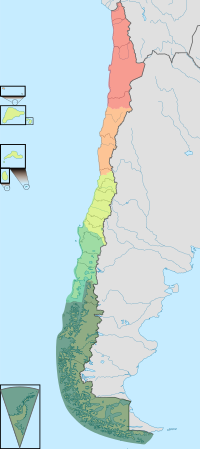Natural region facts for kids

A natural region is a big area of land that shares similar natural features. Think of it like a giant puzzle piece of the Earth! These shared features can be about its geography (what the land looks like), its geology (the types of rocks and soil), and its climate (the weather patterns).
In these regions, the plants (flora) and animals (fauna) that live there are often shaped by the land's features. For example, the type of soil or how much water is available can affect them. This means many natural regions are like one big, connected ecosystem. People can also change natural regions over time.
Understanding Natural Regions
The idea of a "natural region" helps us understand large parts of the Earth. It's a basic way to divide the world based on nature. For example, the huge boreal forest is a natural region. This term can be used generally, like "alpine tundra" (cold, treeless mountain areas). It can also be used for a specific place.
Why Are Natural Regions Important?
Natural regions are very useful when there isn't an official name or border for an area. For instance, The Fens in eastern England is a natural region known for its flat, marshy land. The Thai highlands in Thailand and the Pays de Bray in France are other examples.
Some natural regions are known for their special geology. Badlands are areas with soft rock that has been eroded into interesting shapes. The Bardenas Reales in Spain is an example of badlands. Another example is The Burren in Ireland, which is famous for its unique limestone landscape.
See also
 In Spanish: Región natural para niños
In Spanish: Región natural para niños
- Ecoregion
- Natural regions of Chile
- Natural regions of Colombia
- Natural regions of Germany
- Natural regions of Venezuela
- Physiographic regions of the world


